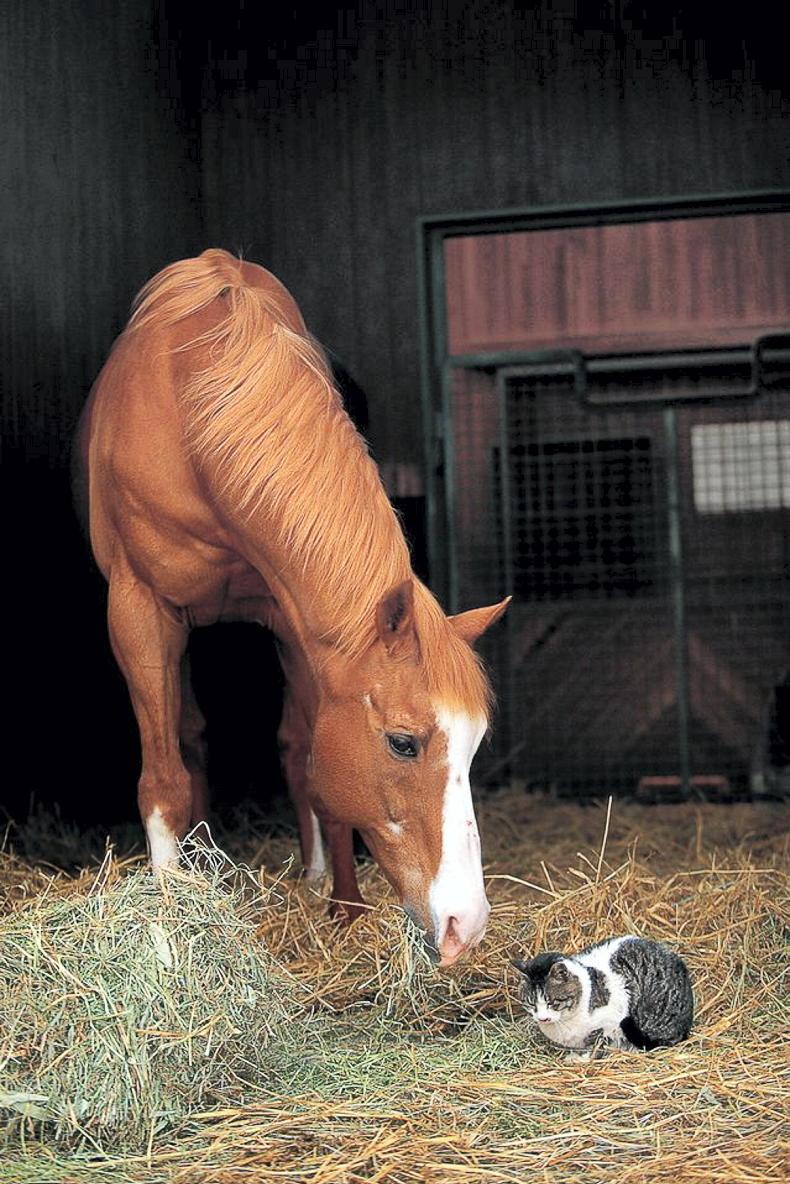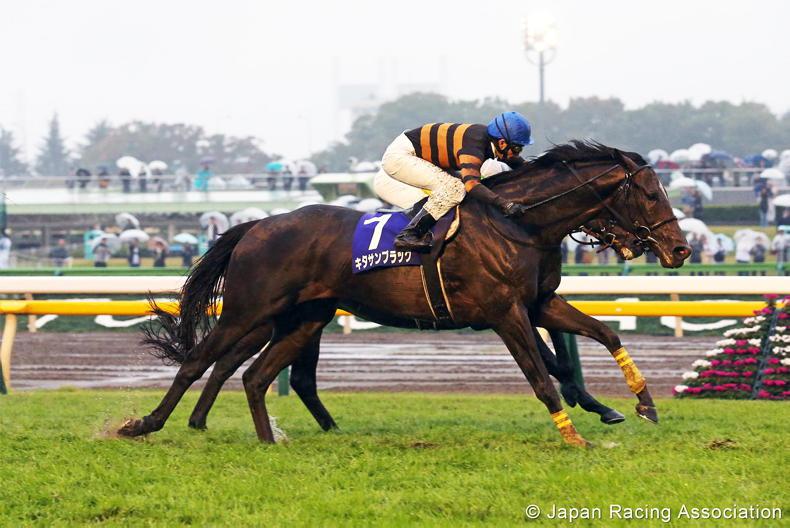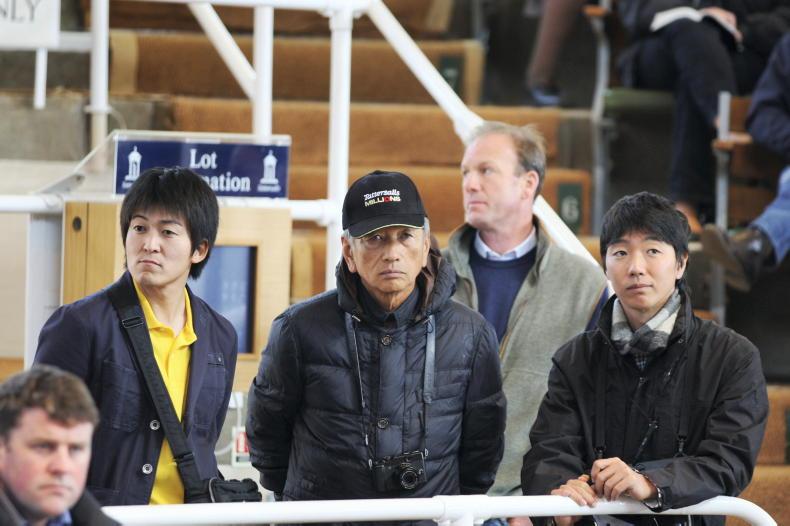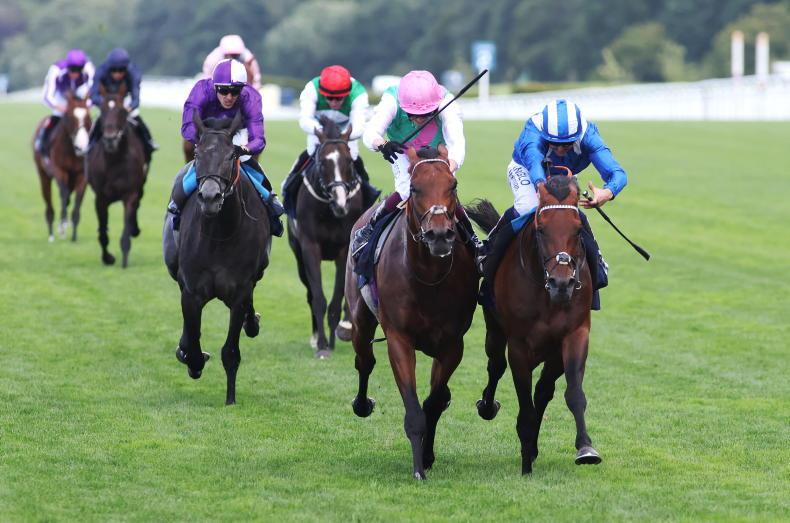THERE was understandably some consternation when Adayar, Hukum and Westover departed Europe to start their stud careers in Japan. Even allowing for the fact that in the case of Westover it was simply a case of the horse being sold, what does the future of a breeding nation look like if the winners of six Group 1 races between them can’t be retained for stud?
We all know the answer. Middle-distance horses, especially later-maturing ones, are a hard sell in this part of the world against a group-winning two-year-old. By contrast, mile-and-a-half horses, even proper stayers, are embraced by the Japanese market, as long as they possess a turn of foot.
That’s not to say that either Adayar, Hukum or Westover are guaranteed to become a success in their new home. History is littered with similar horses, among them a number of Epsom Derby winners, who failed to make the cut in Japan and were duly reinvented back in Europe as jumps stallions.
Yet the fact remains that there is a level of respect afforded to these types of horses by Japanese breeders that is fading in Europe. That much was evident at the recent JRHA Select Sale in Hokkaido where a pair of foals from the first crop of Irish Derby winner Westover sold for 80,000,000yen (€460,000) and 62,000,000yen (€360,000).
Of course, as ever it goes back to prize-money. For plenty of owners in Britain and Ireland, the home run is selling a horse off the back of early promise, and for that the faster, more precocious horses often fit the bill. In Japan, such is the prize-money and prestige, especially on the Japan Racing Association (JRA) circuit, that the driving force remains racing itself.
The Japanese industry has come a long way in a relatively short space of time. As breeders sought to enhance the product during the 1970s, ‘80s and ‘90s, numerous European and North American runners were imported for stud duty. The import of stallion prospects slowed up in later years, but the acquisition of fillies and mares has not. Immense investment continues to be made in that department, with the end result being that an outstanding depth of quality is now in the hands of Japanese breeders, particularly the Yoshida brothers.
“We’ve all seen the importance of quality European and American bloodstock to Japanese breeders,” says BBA Ireland agent John Tyrrell, who has been instrumental in brokering the sale of a number of stallion prospects to Japan. “It’s a priority. At the same time, they’ve backed it up with an improvement in their own expertise and high standard of management. It’s there for all to see - how successful their horses are now worldwide, especially when they run at some of these big international meetings.”
That depth of quality was certainly evident at the JRHA Select Sale, a two-day sale consisting of yearlings and foals which represented a melting pot of stock out of some of the best runners produced in Europe, Australasia, the US and South America. Again, fashion doesn’t always come into it; when those tough, Group 1 mares come on to the market, they invariably attract the attention of Japanese buyers, regardless of how they are bred.
The catalyst behind all of this, of course, was the Yoshidas’ acquisition of Sunday Silence. Shunned by the American market when owner Arthur Hancock floated the idea of standing him at his Stone Farm in Kentucky, Sunday Silence was transferred into the full ownership of Zenya Yoshida, took up residence at Shadai Farm and proceeded to rewrite the history books as a 13-time champion sire.
Thinking outside the box
The tall, lanky Sunday Silence, a horse with questionable hocks who had once been a $17,000 yearling, was never going to be a likely candidate to appeal to American breeders despite a race record that included wins in the 1989 Kentucky Derby and Breeders’ Cup Classic.
Instead, the son of Halo arrived at Shadai at a time when the reign of the era’s dominant sire Northern Taste, a diminutive son of Northern Dancer picked up by Yoshida for just $100,000 as a yearling, was coming to an end.
Ahead of the JRHA Select Sale, Teruya Yoshida recalled those early days of watching and researching. “My father would travel the world to see good horses,” he said. “To see these good stallions is very important.
 “We visited Northern Dancer in Maryland, a small horse but strong-tempered. And I remember seeing Lyphard, who was two years older than Northern Taste, at Haras d’Etreham in France. He was a small Northern Dancer too, smaller than Northern Taste - and seeing him gave me the confidence to back Northern Taste.”
“We visited Northern Dancer in Maryland, a small horse but strong-tempered. And I remember seeing Lyphard, who was two years older than Northern Taste, at Haras d’Etreham in France. He was a small Northern Dancer too, smaller than Northern Taste - and seeing him gave me the confidence to back Northern Taste.”
Aided by the ability to work with daughters of Northern Taste, Sunday Silence thrived in the Japanese environment, with a slew of champions ultimately bringing him and Japan to global attention.
Today, much of the Japanese breed has shades of Sunday Silence to it, whether in its dark colour or rangy physique - the 2023 world champion Equinox and Coolmore’s Derby winner Auguste Rodin being good examples.
Indeed, it is estimated that over 70%of the current Japanese broodmare population contains Sunday Silence. Add that to the plethora of stallions with Sunday Silence in their backgrounds currently in service and little wonder that inbreeding to the horse is a growing trend or problem, depending on how you look at it.

Nevertheless, there’s no getting away from how Japanese racing and its increasingly strong presence on the worldwide stage owes so much to Sunday Silence and more recently his son Deep Impact.
The latter picked up where his sire left off by promoting the breed to a wider audience, notably as the sire of European classic winners and sires Saxon Warrior and Study Of Man.
Interestingly, other members of the Hail To Reason sire line have also thrived in Japan, ranging from Brian’s Time and Symboli Kris S to the current leading young sire Nadal, the most successful son of Blame at stud worldwide. By contrast, the line - which is renowned for its durability - is becoming harder to find elsewhere.
Homegrown
While a handful of international big names are still imported for stud duty on an annual basis, many of the most desirable stallions in Japan today are homegrown products including the current star Kitasan Black, a son of Deep Impact’s full-brother Black Tide and the sire of this year’s Japanese Derby winner Croix Du Nord as well as Equinox. His own race record includes a Group 1 win in the Tenno Sho over two miles.
 That is something that Kitasan Black has in common with Deep Impact, whose seven Group 1 wins were also recorded at up to two miles, and current leading sire Ephipaneia, winner of the Japanese St Leger over 15 furlongs. The reigning champion sire Kizuna is also a Japanese Derby winner. Two-year-old racing is respected but not the Holy Grail; it is now early August and that particular circuit is only just now getting going.
That is something that Kitasan Black has in common with Deep Impact, whose seven Group 1 wins were also recorded at up to two miles, and current leading sire Ephipaneia, winner of the Japanese St Leger over 15 furlongs. The reigning champion sire Kizuna is also a Japanese Derby winner. Two-year-old racing is respected but not the Holy Grail; it is now early August and that particular circuit is only just now getting going.
“We do have two-year-old races in April [on the NAR circuit] but the first JRA two-year-old race is in June,” said Yoshida. “The majority of two-year-old races are over a mile or mile and eighth.”
He added: “European horses become more valuable when they retire to stud but people in Japan enjoy running them as older horses. Usually, we don’t retire them as three-year-olds, often we keep them running until the end of their four-year-old season.” As such, many of those top horses become fan favourites, which obviously also assists in feeding the sport’s popularity.
That’s not to say the industry leans heavily on the staying horse since sprinters Lord Kanaloa and Drefong have been very successful stallions for Shadai and are extremely popular as a result. However, it presents a welcome balance.
At the same time, the management of stock has developed and improved immensely. The land in the Shizunai breeding region in Hokkaido, in the southern half of the island set against a mountainous backdrop, remains rich and green despite the summer’s heat. It’s probably no coincidence that very few of the youngstock presented for the JRHA Sale lacked for size or bone.
Not without challenges
While foal crops are declining in most jurisdictions, there also seems to be a refreshing enthusiasm from breeders to produce racehorses. The Japanese foal crop is actually going up - it rose marginally to 7,715 in 2024 - although Yoshida sounded a note of caution in that an increase in stock naturally requires a greater number of staff.
“I don’t think it will be easy for it to expand much more due the number of people wanting to work in the industry,” he said. “There is lot of effort to produce these horses - we not only breed them but we break and train them here as young horses too. You need a huge network to do that.”
There are several training programmes on offer for people wishing to come into the industry, notably at the Japan Bloodhorse Breeders’ Association (JBBA), which hosts a year-long stud course at its Shizunai base. Over 500 students have graduated from its programme to date and such is the interest that the organisation increased the number of available places this year.
Meanwhile, when it comes to the sales, there seems a real desire from owners to play at the top end.
 Noting that the yearling section of this month’s JRHA Sale welcomed around 70 new owners, Yoshida added: “I was very happy to see so many new players coming into the market, and I’m very impressed to see how they don’t hesitate to invest so strongly. They are really enjoying ownership, even though it is not profitable. Horse racing in this country is a very attractive entertainment.”
Noting that the yearling section of this month’s JRHA Sale welcomed around 70 new owners, Yoshida added: “I was very happy to see so many new players coming into the market, and I’m very impressed to see how they don’t hesitate to invest so strongly. They are really enjoying ownership, even though it is not profitable. Horse racing in this country is a very attractive entertainment.”
Yoshida was speaking in the aftermath of another record-breaking renewal of the JRHA Sale, at which a record average of 72,185,430yen (€420,000) was set. Remarkably, only 14 of the 467 horses offered failed to sell.
A key driver in that remarkable market were the first foals by Equinox; 10 sold in excess of $1 million led by the 580,000,000yen (€3.4 million) colt out of champion Midnight Bisou.
“They have set a strong example in the amount of information available to buyers there,” says Tyrrell. “Buyers have access to all the heights and weights of a horse as well as the reserve that’s going to be placed on them. There is a real transparency to it all. And you have plenty of new owners always coming in, many of them from the racing clubs which are the backbone to much of it.”
He adds: “I never tire of going there, it’s still quite exciting - seeing what they have bought, what those horses are now producing and the management of them. They’re having huge success and that in turn is giving them huge confidence in the whole system.”
